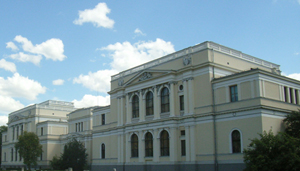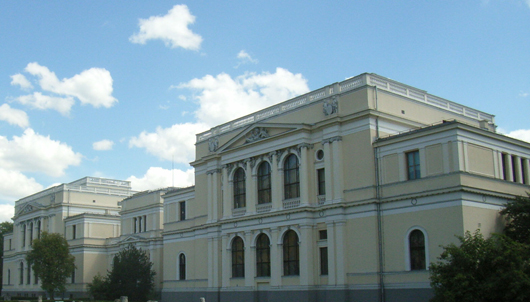
“Such a complex institution cannot function by improvisations. The authorities must provide the funds for employees’ salaries and functioning costs,” museum manager Adnan Busuladzic said.
About 60 employees of Bosnia’s oldest museum, founded in 1888 and situated in the capital Sarajevo, have gone unpaid for about a year, Busuladzic said.
They left the building unstaffed and nailed wooden boards saying “Closed” to the entrance, while several students briefly chained themselves up in protest.
Hundreds of students also marched along central Sarajevo streets demanding the museum’s reopening.
The institution needs some 60,000 euros ($78,000) per month for regular activities and functions, Busuladzic said.
Founded when Bosnia was part of the Austrian-Hungarian Empire (1878-1914), the National Museum has never before closed its doors, even during the country’s bloody 1992-1995 war.
Busuladzic warned of the “indifference” shown by the local authorities.
The management has already filed a legal complaint against the Bosnian government, accusing it of negligence towards the state institution.
“What happens nowadays, in 2012, 17 years after the war, is a humiliation, a shame and a sin,” said local historian Enver Imamovic, who ran the museum during the 1992-1995 war.
After Bosnia’s inter-ethnic war that pitted Muslims, Serbs and Croats against each other, the Balkan country was divided into two semi-autonomous entities, the Muslim Croat Federation and Republika Srpska overseen by a weak central government.
The 1995 Dayton peace agreement ending Bosnia’s war failed to envisage a central ministry of culture. The civilian affairs ministry is in charge of the coordination of cultural projects and international cooperation.
Bosnian Muslim, Croat and Serb political parties have still failed to reach an accord to finance the museum and other institutions through the central budget.
In January, the national library had its heating cut just as Bosnia was hit with freezing temperatures.
The Bosnia National Museum’s problems are not unique. The Gallery of Modern Art has closed its permanent collection to the public since September 2011.
# # #
ADDITIONAL IMAGE OF NOTE


